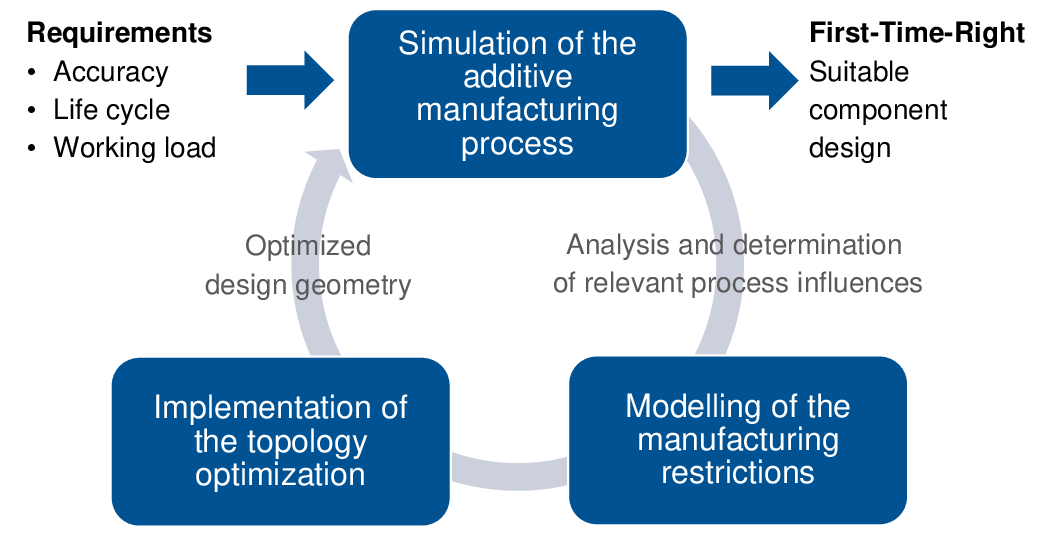OptProLaS – Component optimization under consideration of the process influences in Laser Beam Melting
The project aims at component optimization considering process influences during laser-based powder bed fusion. For this purpose, the manufacturing restrictions of the process are to be determined, modelled and then integrated into the topology optimization. To achieve this, the process simulation developed at iwb will be coupled with the topology optimization.
Initial situation
Compared to conventional manufacturing methods, laser-based powder bed fusion (LPBF) is characterized by tool-less production and a high degree of geometric design freedom. This enables the cost-effective production of particularly complex, design-optimized component geometries. In contrast to the conventional target parameters such as mass and stiffness, the manufacturing restrictions of LPBF are currently not or only insufficiently considered during the design of components. As a result, topology optimization often results in filigree structures, which fail during the production process. This often leads to process terminations and increased scrap rates.
Objective and expected results
The aim of the project is the design of LPBF components in a load-adapted and production-oriented way. The digital synchronization of design and manufacturing will allow to fully exploit the potential of additive manufacturing.
As a result, there will be an increased understanding of the LPBF process of filigree structures. In addition, the simulation and design procedure developed will be described in a user-oriented guideline. The aim is to use these guidelines to shorten the product development process for design-optimised structures, and to enable first-time-right manufacturing.
Approach
The manufacturing restrictions of LPBF are determined experimentally using a statistical design of experiments. Hereby, a particular focus is on bionic structures with filigree component areas and spontaneous cross-sectional changes. The relevant process effects are modelled using suitable approaches and integrated into the objective function of topology optimization. Subsequently, the design optimization of various demonstrator components is performed according to load and production requirements. For this purpose, the topology optimization is coupled with the already existing process simulation and the developed procedure for design and manufacturing is validated by means of exemplary build jobs. Finally, the gained process understanding and the simulation methodology are described in a user-oriented guideline to enable users to produce optimized structures using LPBF first time right.
Acknowledgements
The research project OptProLaS is funded by KME - Kompetenzzentrum Mittelstand GmbH. We thank for the excellent support and the cooperation with the project partners.
